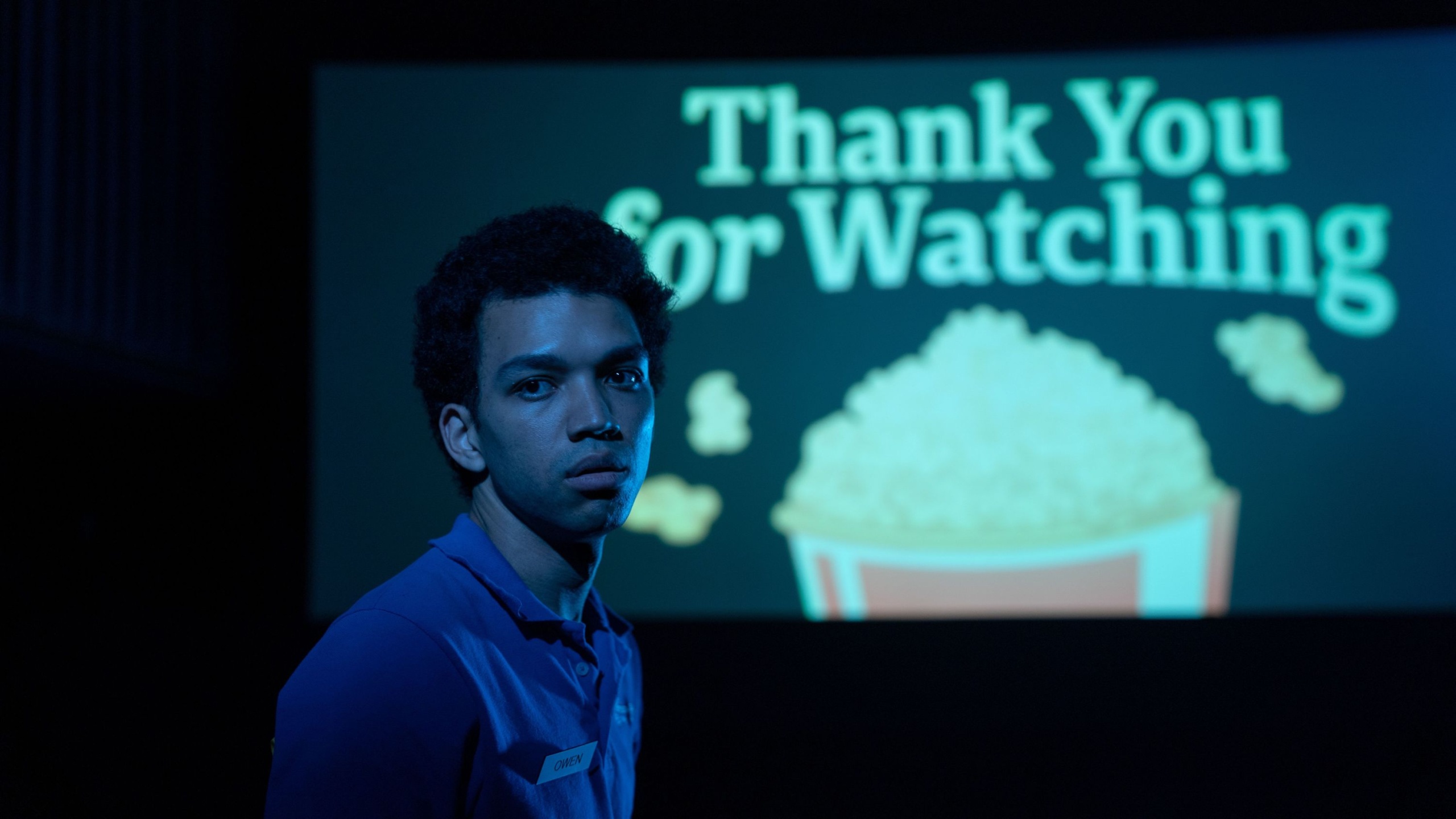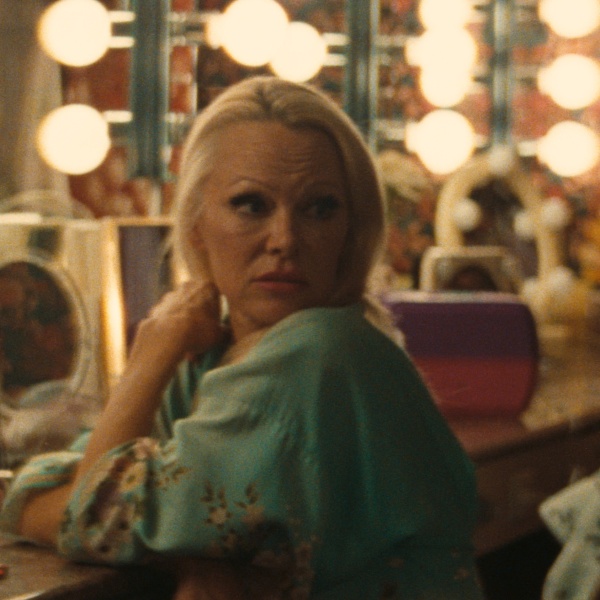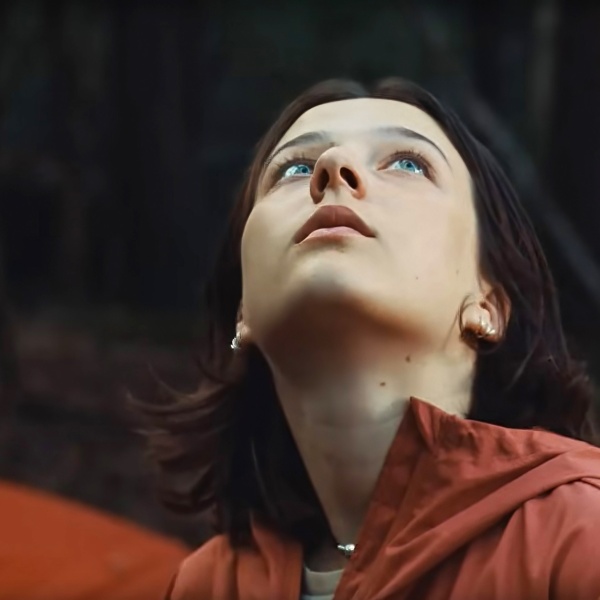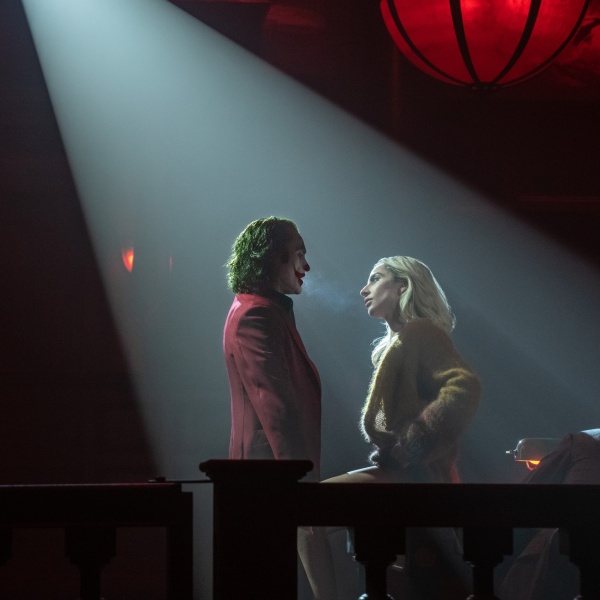Seven years after the premiere of “Twin Peaks: The Return,” and the third season of David Lynch’s small-town-turned-cosmic nightmare is still reverberating for a new generation of filmmakers.
So it’s apt that Jane Schoenbrun’s “I Saw the TV Glow,” a suburban lucid dream of a movie about how the media we consume can then consume us, feels like the first film to truly capture the dread and dissonance of Lynch’s reinvention — a series that was itself a comment on how you can truly never go home again, and how rose-colored memories become warped and monstrous by the passage of time.
“I Saw the TV Glow” follows Owen (Justice Smith), a gloomy New Jersey teen obsessed with a YA TV series called “The Pink Opaque,” about two physically apart teen girls who share a psychic connection that could help them defeat a moon-faced monster called Mr. Melancholy. Owen bonds with fellow outcast classmate Maddy (Brigette Lundy-Paine) over their love for the show until Maddy goes missing, only to return years later claiming that the fiction of the series is somehow looming in their own reality.
Meanwhile, Owen is slowly coming to terms with his gender dysphoria, a feeling that something is wrong that he can’t quite articulate. It’s Owen’s dysphoric relationship to identity that Schoenbrun parallels with our own toward the images we consume, images we once held dear that now appear hollow. When older in his twenties, Owen rewatches “The Pink Opaque” on a streaming platform, he’s shattered by how disappointing it is.
After writing “I Saw the TV Glow,” Schoenbrun, 37, had a similar experience revisiting the musical episode of “Buffy the Vampire Slayer” called “Once More, with Feeling” after transitioning.
“I sat down and watched the second half of it, and it was actually so painful for me,” they told IndieWire. “It wasn’t painful in the way that, it’s painful for Owen when he sees ‘The Pink Opaque’ for the hundredth time and realizes that it’s trash. It was painful because I still loved it, and I still thought it was amazing, and I knew it by heart, but I hadn’t seen it in a while. I was remembering all of these lost memories of it. I remembered how much every one of those moments meant to me, and what those characters meant to me, and the way that that episode had so beautifully expressed everything I loved about this thing that I loved more than I loved anything else at the time.”

They said, “Returning to that space now four or five years into transition and in a life that is awesome, I have queer family, and I have partners who fill my life up and who I love and who love me IRL in a way that was totally off limits before I could become myself or off limits anywhere except putting a lot of love into the safe place of a TV show that didn’t love me back … it was like seeing your ex, seeing your first love for the first time in a few years. The further away we get from those TV shows, it’s the same feeling as returning to your hometown and being like, that’s the place that I imbued with so much love.”
So speaking of revived ’90s TV, that’s fitting for comparisons to “Twin Peaks: The Return,” which intentionally alienates fans of the original early-‘90s series with a darker reacquaintance with characters like Dale Cooper (Kyle MacLachlan) and Laura Palmer (Sheryl Lee), now played by actors who, too, have aged, and who literally are not the same characters you remember.
“I loved the way that it was not so much a sequel as it was a deterioration of sorts. Lynch, down to the last line of the series (‘What year is this?’) feels so fascinated by the passage of time and the way that it’s rendered his actors’ faces different than we might remember them from our own experiences watching the show in childhood. I think the show is just so rich in exploring memory and perhaps even exploring the deterioration of memory over time,” Schoenbrun said.

The ending of the original series — in which Dale Cooper is possessed by the evil entity BOB, laughing maniacally in the mirror — for Schoenbrun “was lodged in my subconscious. It had this unresolved cliffhanger of an ending that was very, very disturbing, and in that period of time just felt like unfinished business, if not like trauma. Obviously, part of the inception of ‘I Saw the TV Glow’ is wanting Dale Cooper to get out of the lodge.”
Schoenbrun called “The Return” “the most cathartic and rich experience of watching media that I’ve had in my adult life.” The ending of “The Return” is just as disturbing as the end of “Twin Peaks” Season 2, and without spoiling anything, Schoenbrun’s own ending feels much of a piece with both.
The film also contains dreamlike musical interludes from the likes of Phoebe Bridgers, Haley Dahl, and Kristina Esfandiari that feel straight out of the Roadhouse in “The Return,” where each episode ended with a Julee Cruise-like musical performance that spoke to the installment’s themes.
The term Lynchian has become almost eroded of meaning and applied lazily to any work that treads in ambient menace and locates the dark underside of Americana. But it’s fair to say Lynch’s voice is present in Schoenbrun’s films, including their feature debut “We’re All Going to the World’s Fair,” about an online creepypasta that overtakes an adolescent’s life.
“The way that the sort of filmic warmth of the original is replaced by this digital dread, the way the plotting is sort of now dancing between these realities that never quite congeal, I think of [‘Twin Peaks: The Return’] as a genuinely revolutionary work and certainly one of the most important works in my life. … Of course, Lynch is a huge constellation for me,” Schoenbrun said.
In the case of “I Saw the TV Glow,” Schoenbrun’s second film makes genuinely revolutionary use of the Lynchian aesthetic by marrying it to a trans one as Owen’s love for “The Pink Opaque” deeps as he begins to make discoveries about himself. And while you can’t quite call “I Saw the TV Glow” a straight horror movie, it contains some of the most horrifying imagery in recent cinematic memory. Schoenbrun is showing us things we’ve never seen before.

“Traditionally in the horror genre, I think that the monster, the dread, the danger, the horror is something external, right? It’s like we’re running from the monster. The monster has been unleashed, and it’s coming for us, and we need to get away,” Schoenbrun said. “Whereas in my films, if there is a horror element to it, it’s very internal and it’s very subliminal, and in ‘World’s Fair,’ it’s this force inside Casey that might not even be real. In ‘I Saw the TV Glow,’ it’s this thing that Owen is hiding from that’s essentially killing him slowly from the inside. And I think this feels like an accurate way to talk about my own experience of dysphoria, which is very ambient and very subliminal until you break and scream at the top of your lungs at a child’s birthday party in an arcade.”
Which is exactly what happens in “I Saw the TV Glow,” and it was through making “We’re All Going to the World’s Fair” that Schoenbrun began to understand their own trans identity more clearly. In that sense, the new film is their most autobiographical, as the dread-filled experience of gender dysphoria becomes the movie’s horror aesthetic.
“I think that we’re so used to expressions of transness in film that are fully externalized, right? It’s all about the external image. It’s all about looking in a mirror, and the mirror is cracked maybe, and you don’t feel like yourself, and you’ve always just wanted to be a beautiful woman, but you’re in a man’s body. This is just so far from my own pre-transition experience. I avoided mirrors, in fact, because I was hiding from myself, and the way that I hid from myself manifested in all of these unconscious ways and in all of these coping mechanisms that had so much more to do with this subtle, almost tonal sense that something was unreal or wrong or passing me by, this ghostly quality of life,” Schoenbrun said.
The filmmaker continued, “So when I am making a movie about that, or in the future when I make a movie about healing from that, it only makes sense for it to be sort of imbued in the language of the film as a whole, tone, rhythm, the way time works in the movies, the aesthetics of liminality and of this sort of fuzziness of whatever it might be, static, analog, low-quality internet video. All of these feel to me like more truthful expressions of that feeling of unreality that we call dysphoria than a more direct and externalized expression of it.”
A24 opens “I Saw the TV Glow” in select theaters on Friday, May 3.




